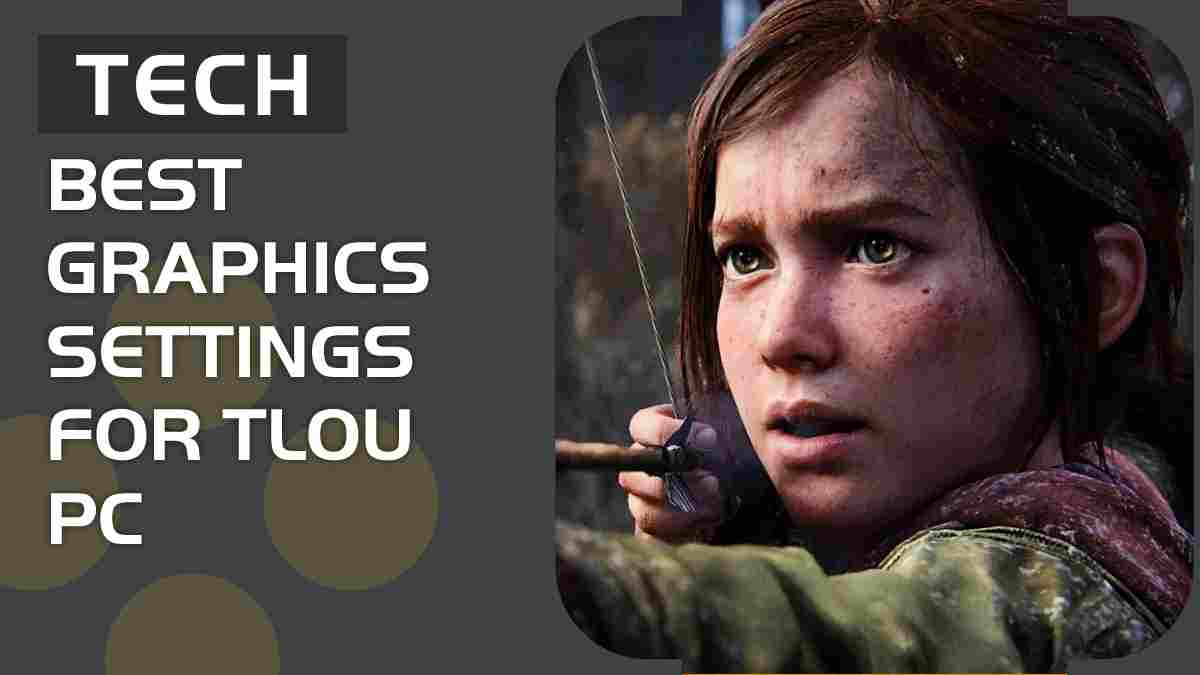Video Gamer is reader-supported. When you buy through links on our site, we may earn an affiliate commission. Prices subject to change. Learn more
Following on from a viral reawakening of the franchise, The Last of Us Part 1 is set to release on PC, and here are the best graphics settings to enable for either an FPS or fidelity focused experience.
The game will feature DLSS and FSR, alongside advanced graphical options that have previously been unavailable in game. Alongside that, there’s also going to be options for an uncapped frame-rate, so anyone with the best graphics cards for the game is going to be enjoying it with an unreal level of immersion.
That’s not all, as the game features support for ultrawide gaming monitors in 21:9 and 32:9 aspect ratios, which is one of the most highly anticipated features in this release of game. You can read our comprehensive list of TLOU P1 PC features here.
With all of the above in mind – it’s important to remember that while the game is a theatrical beauty, it also demands a healthy slice of power from your rig. If you’re gaming on a slightly cheaper gaming laptop or budget gaming PC, you’re going to need to consider optimising the graphics settings for performance and FPS, which we’ll walk you through.
Best graphics settings for The Last of Us Part 1 on PC for performance
If you’re planning to play The Last of Us Part 1 on a PC that’s slightly less beefy than the recommended system requirements, you’re going to have to workaround some of the graphics options. Depending on what graphics card you have, you’re going to want to consider enabling either DLSS or FSR.
These features will use AI upscaling to increase your resolution artificially, without rendering it at that resolution. With this, you might be able to game in 1440p at consistent and healthy frame-rates that you would enjoy from 1080p resolutions.
If you can, we highly recommend this for performance settings.
We’d also recommend the use of VSync, which will help to stabilise and moderate your frame-rate, keeping your performance level.
However, we did notice that the game was experiencing some issues with extremely low frame-rates, which were darting about the place in both performance and fidelity settings. This is largely due to the PC we were using which is bottlenecked by a poor CPU, though we will be investigating this further.
- Aspect Ratio – Default
- Display Resolution – Default
- Ultra Pillarboxes – Default
- V-Sync – On
- Framerate Cap – 60
- Scaling Mode – DLSS or FSR
- Quality – Balanced
- Graphics Preset – Custom
- Animation Quality – Medium
- Draw Distance – Low
- Dynamic Objects Level of Detail – Low
- Character Level of Detail – Medium
- Environments Level of Detail – Medium
- Dynamic Objects Texture Quality – Low
- Characters Texture Quality – Medium
- Environments Texture Quality – Medium
- Visual Effects Texture Quality – Low
- Texture Filtering – Anisotropic 4x
- Texture Sampling Quality – Medium
- Ambient Shadows Quality – Quarter Resolution
- Directional Shadow Resolution – Medium
- Directional Shadow Distance – Medium
- Image Based Lighting – On
- Spotlights Shadow Resolution – Medium
- Point Lights Shadow Resolution – Medium
- Bounced Lighting – On
- Screen Space Shadows Quality
Best graphics settings for The Last of Us Part 1 on PC for a fidelity experience
If you’re gaming on a powerful PC with the latest hardware – you’re going to be able to enjoy the game at the highest graphics options.
If you can, we would recommend using the ultrawide options, however, this is dependant on your PC being able to stretch itself to those extremes. Alongside that, we would definitely enable DLSS or FSR, at the highest fidelity options.
We would also recommend VSync as you can expect screen-tearing when gaming at such high frame-rates.
Not everyone’s gaming PC will be the same, so we would advise all gamers to consider fiddling around with all of the graphics settings first.
- Aspect Ratio – Default
- Display Resolution – Default
- Ultra Pillarboxes – Default
- V-Sync – On
- Framerate Cap – Unlocked
- Scaling Mode – DLSS or FSR
- Quality – Quality
- Graphics Preset – Custom
- Animation Quality – High
- Draw Distance – Medium
- Dynamic Objects Level of Detail – High
- Character Level of Detail – High
- Environments Level of Detail – High
- Dynamic Objects Texture Quality – High
- Characters Texture Quality – Medium
- Environments Texture Quality – Medium
- Visual Effects Texture Quality – High
- Texture Filtering – Anisotropic 16x
- Texture Sampling Quality – High
- Ambient Shadows Quality – Half
- Directional Shadow Resolution – High
- Directional Shadow Distance – Medium
- Image Based Lighting – On
- Spotlights Shadow Resolution – Medium
- Point Lights Shadow Resolution – Medium
- Bounced Lighting – On
- Screen Space Shadows Quality
Make sure to check back in with us periodically for the latest updates on our recommendations for the best graphics settings for The Last of Us Part 1 on PC. In the meanwhile you might be interested in learning if the game can be played on Steam Deck, and if it features ray tracing.
Frequently Asked Questions
Is The Last of Us Part 1 PC a difficult game to run?
TLOU P1 PC is a graphically intensive game that will demand a heavy amount of processing power to run.
Can The Last of Us Part 1 PC be played in windowed mode?
You will be able to enjoy The Last of Us Part 1 on PC in windowed mode, making it easier for simpler gaming PCs to run the game.
